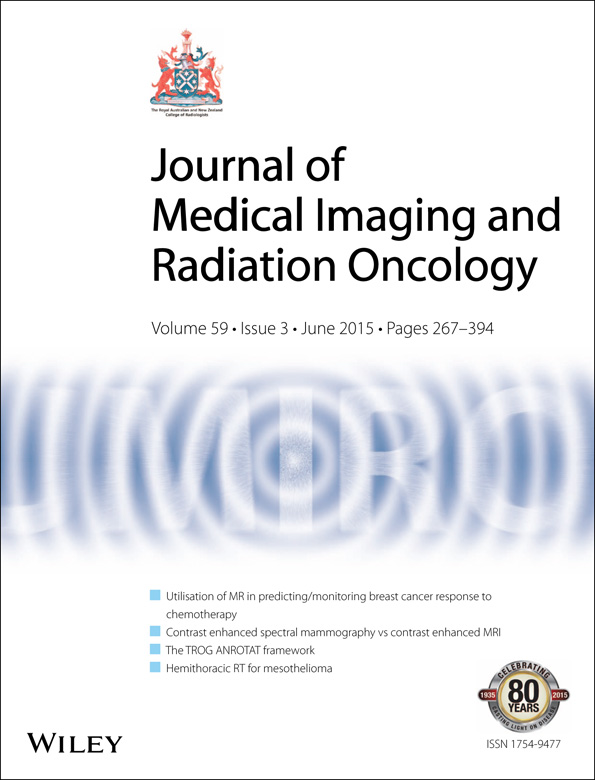Audit of radiation dose delivered in time-resolved four-dimensional computed tomography in a radiotherapy department
Abstract
Introduction
To review the dose delivered to patients in time-resolved computed tomography (4D CT) used for radiotherapy treatment planning.
Methods
4D CT is used at Peter MacCallum Cancer Centre since July 2007 for radiotherapy treatment planning using a Philips Brilliance Wide Bore CT scanner (16 slice, helical 4D CT acquisition). All scans are performed at 140 kVp and reconstructed in 10 datasets for different phases of the breathing cycle. Dose records were analysed retrospectively for 387 patients who underwent 4D CT procedures between 2007 and 2013.
Results
A total of 444 4D CT scans were acquired with the majority of them (342) being for lung cancer radiotherapy. Volume CT dose index (CTDIvol) as recorded over this period was fairly constant at approximately 20 mGy for adults. The CTDI for 4D CT for lung cancers of 19.6 ± 9.3 mGy (n = 168, mean ± 1SD) was found to be 63% higher than CTDIs for conventional CT scans for lung patients that were acquired in the same period (CTDIvol 12 ± 4 mGy, sample of n = 25). CTDI and dose length product (DLP) increased with increasing field of view; however, no significant difference between DLPs for different indications (breast, kidney, liver and lung) could be found. Breathing parameters such as breathing rate or pattern did not affect dose.
Conclusion
4D CT scans can be acquired for radiotherapy treatment planning with a dose less than twice the one required for conventional CT scanning.




